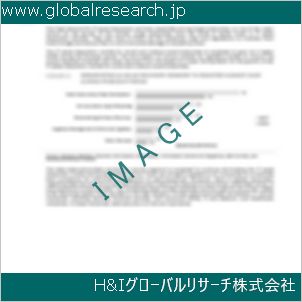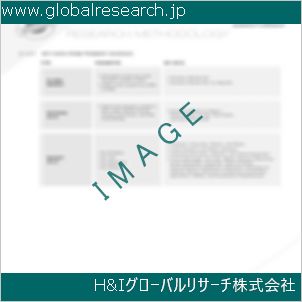Table of Contents
1 Industry Overview of Rubidium
1.1 Definition and Specifications of Rubidium
1.1.1 Definition of Rubidium
1.1.2 Specifications of Rubidium
1.2 Classification of Rubidium
1.3 Applications of Rubidium
1.3.1 Nuclear Application
1.3.2 Non-Nuclear Application
1.4 Industry Chain Structure of Rubidium
1.5 Industry Overview and Major Regions Status of Rubidium
1.5.1 Industry Overview of Rubidium
1.5.2 Global Major Regions Status of Rubidium
1.6 Industry Policy Analysis of Rubidium
1.7 Industry News Analysis of Rubidium
2 Manufacturing Cost Structure Analysis of Rubidium
2.1 Raw Material Suppliers and Price Analysis of Rubidium
2.2 Equipment Suppliers and Price Analysis of Rubidium
2.3 Labor Cost Analysis of Rubidium
2.4 Other Costs Analysis of Rubidium
2.5 Manufacturing Cost Structure Analysis of Rubidium
2.6 Manufacturing Process Analysis of Rubidium
3 Technical Data and Manufacturing Plants Analysis of Rubidium
3.1 Capacity and Commercial Production Date of Global Rubidium Major Manufacturers in 2023
3.2 Manufacturing Plants Distribution of Global Rubidium Major Manufacturers in 2023
3.3 R&D Status and Technology Source of Global Rubidium Major Manufacturers in 2023
3.4 Raw Materials Sources Analysis of Global Rubidium Major Manufacturers in 2023
4 Capacity, Production and Revenue Analysis of Rubidium by Regions, Types and Manufacturers
4.1 Global Capacity, Production and Revenue of Rubidium by Regions 2019-2024
4.2 Global and Major Regions Capacity, Production, Revenue and Growth Rate of Rubidium 2019-2024
4.3 Global Capacity, Production and Revenue of Rubidium by Types 2019-2024
4.4 Global Capacity, Production and Revenue of Rubidium by Manufacturers 2019-2024
5 Price, Cost, Gross and Gross Margin Analysis of Rubidium by Regions, Types and Manufacturers
5.1 Price, Cost, Gross and Gross Margin Analysis of Rubidium by Regions 2019-2024
5.2 Price, Cost, Gross and Gross Margin Analysis of Rubidium by Types 2019-2024
5.3 Price, Cost, Gross and Gross Margin Analysis of Rubidium by Manufacturers 2019-2024
6 Consumption Volume, Consumption Value and Sale Price Analysis of Rubidium by Regions, Types and Applications
6.1 Global Consumption Volume and Consumption Value of Rubidium by Regions 2019-2024
6.2 Global and Major Regions Consumption Volume, Consumption Value and Growth Rate of Rubidium 2019-2024
6.3 Global Consumption Volume and Consumption Value of Rubidium by Types 2019-2024
6.4 Global Consumption Volume and Consumption Value of Rubidium by Applications 2019-2024
6.5 Sale Price of Rubidium by Regions 2019-2024
6.6 Sale Price of Rubidium by Types 2019-2024
6.7 Sale Price of Rubidium by Applications 2019-2024
6.8 Market Share Analysis of Rubidium by Different Sale Price Levels
7 Supply, Import, Export and Consumption Analysis of Rubidium
7.1 Supply, Consumption and Gap of Rubidium 2019-2024
7.2 Global Capacity, Production, Price, Cost, Revenue, Supply, Import, Export and Consumption of Rubidium 2019-2024
7.3 USA Capacity, Production, Price, Cost, Revenue, Supply, Import, Export and Consumption of Rubidium 2019-2024
7.4 EU Capacity, Production, Price, Cost, Revenue, Supply, Import, Export and Consumption of Rubidium 2019-2024
7.5 China Capacity, Production, Price, Cost, Revenue, Supply, Import, Export and Consumption of Rubidium 2019-2024
7.6 Japan Capacity, Production, Price, Cost, Revenue, Supply, Import, Export and Consumption of Rubidium 2019-2024
8 Major Manufacturers Analysis of Rubidium
8.1 Manufacturer One
8.1.1 Company Profile
8.1.2 Product Picture and Specifications
8.1.2.1 Type I
8.1.2.2 Type II
8.1.2.3 Type III
8.1.3 Capacity, Production, Price, Cost, Gross and Revenue
8.1.4 Contact Information
8.2 Manufacturer Two
8.2.1 Company Profile
8.2.2 Product Picture and Specifications
8.2.2.1 Type I
8.2.2.2 Type II
8.2.2.3 Type III
8.2.3 Capacity, Production, Price, Cost, Gross and Revenue
8.2.4 Contact Information
8.3 Manufacturer Three
8.3.1 Company Profile
8.3.2 Product Picture and Specifications
8.3.2.1 Type I
8.3.2.2 Type II
8.3.2.3 Type III
8.3.3 Capacity, Production, Price, Cost, Gross and Revenue
8.3.4 Contact Information
8.4 Manufacturer Four
8.4.1 Company Profile
8.4.2 Product Picture and Specifications
8.4.2.1 Type I
8.4.2.2 Type II
8.4.2.3 Type III
8.4.3 Capacity, Production, Price, Cost, Gross and Revenue
8.4.4 Contact Information
8.5 Manufacturer Five
8.5.1 Company Profile
8.5.2 Product Picture and Specifications
8.5.2.1 Type I
8.5.2.2 Type II
8.5.2.3 Type III
8.5.3 Capacity, Production, Price, Cost, Gross and Revenue
8.5.4 Contact Information
…
9 Marketing Trader or Distributor Analysis of Rubidium
9.1 Marketing Channels Status of Rubidium
9.2 Traders or Distributors with Contact Information of Rubidium by Regions
9.3 Ex-work Price, Channel Price and End Buyer Price Analysis of Rubidium
9.4 Regional Import, Export and Trade Analysis of Rubidium
10 Industry Chain Analysis of Rubidium
10.1 Upstream Major Raw Materials Suppliers Analysis of Rubidium
10.1.1 Major Raw Materials Suppliers with Contact Information Analysis of Rubidium
10.1.2 Major Raw Materials Suppliers with Supply Volume Analysis of Rubidium by Regions
10.2 Upstream Major Equipment Suppliers Analysis of Rubidium
10.2.1 Major Equipment Suppliers with Contact Information Analysis of Rubidium
10.2.2 Major Equipment Suppliers with Product Pictures Analysis of Rubidium by Regions
10.3 Downstream Major Consumers Analysis of Rubidium
10.3.1 Major Consumers with Contact Information Analysis of Rubidium
10.3.2 Major Consumers with Consumption Volume Analysis of Rubidium by Regions
10.4 Supply Chain Relationship Analysis of Rubidium
11 Development Trend of Analysis of Rubidium
11.1 Capacity, Production and Revenue Forecast of Rubidium by Regions and Types
11.1.1 Global Capacity, Production and Revenue of Rubidium by Regions 2024-2029
11.1.2 Global and Major Regions Capacity, Production, Revenue and Growth Rate of Rubidium 2024-2029
11.1.3 Global Capacity, Production and Revenue of Rubidium by Types 2024-2029
11.2 Consumption Volume and Consumption Value Forecast of Rubidium by Regions, Types and Applications
11.2.1 Global Consumption Volume and Consumption Value of Rubidium by Regions 2024-2029
11.2.2 Global and Major Regions Consumption Volume, Consumption Value and Growth Rate of Rubidium 2024-2029
11.2.3 Global Consumption Volume and Consumption Value of Rubidium by Types 2024-2029
11.2.4 Global Consumption Volume and Consumption Value of Rubidium by Applications 2024-2029
11.3 Supply, Import, Export and Consumption Forecast of Rubidium
11.3.1 Supply, Consumption and Gap of Rubidium 2024-2029
11.3.2 Global Capacity, Production, Price, Cost, Revenue, Supply, Import, Export and Consumption of Rubidium 2024-2029
11.3.3 USA Capacity, Production, Price, Cost, Revenue, Supply, Import, Export and Consumption of Rubidium 2024-2029
11.3.4 EU Capacity, Production, Price, Cost, Revenue, Supply, Import, Export and Consumption of Rubidium 2024-2029
11.3.5 China Capacity, Production, Price, Cost, Revenue, Supply, Import, Export and Consumption of Rubidium 2024-2029
11.3.6 Japan Capacity, Production, Price, Cost, Revenue, Supply, Import, Export and Consumption of Rubidium 2024-2029
12 New Project Investment Feasibility Analysis of Rubidium
12.1 New Project SWOT Analysis of Rubidium
12.2 New Project Investment Feasibility Analysis of Rubidium
13 Conclusion of the Global Rubidium (CAS 7440-17-7) Industry 2024 Market Research Report
| ※参考情報 ルビジウム(Rubidium、化学記号Rb、CAS番号7440-17-7)は、周期表の第1族に属するアルカリ金属の一種であり、非常に反応性の高い元素です。その名は、ラテン語の「rubidus」(赤い)に由来し、最初に発見されたときに使われた光の波長の関係から命名されました。ルビジウムは1861年にドイツの化学者ロブルト・ボシュによって発見され、その特異な色のスペクトルから新しい元素として認識されました。 ルビジウムは、主に灰色の金属の状態で存在し、常温では柔らかく、銀白色を呈しています。非常に軽量で、融点は約39.3°C、沸点は688°Cです。常圧下では、ルビジウムは固体の状態で存在しており、他のアルカリ金属と同様に、水分と接触することで容易に酸化し、酸化ルビジウム(Rb2O)を形成します。そのため、空気中での貯蔵には特別な注意が必要であり、厳重に密閉された環境下で保存されることが推奨されています。 ルビジウムの特徴としては、最も軽いアルカリ金属の一つであること、また、その塩類(例えば、ルビジウム塩)は水に非常に溶けやすいことが挙げられます。さらに、ルビジウムは比較的高い原子量を有しており、同位体は天然に存在するIsotope Rb-87(安定同位体)とRb-85(安定同位体、自然界にはかなり多く存在する)などがあります。これらの同位体は、核磁気共鳴(NMR)や質量分析などの分析技術において重要な役割を果たしています。 ルビジウムの主な用途は、主に化学工業及び製造業において見られます。特に、ルビジウム塩は、ガラス、陶芸、色素、セラミック製品の加速剤として使われます。また、高熱伝導性を示す特性から、特殊な thermal storage media(熱貯蔵材料)や高温超伝導体にも利用されており、エネルギー技術の研究開発においても価値を持っています。 さらに、ルビジウムは、センサー技術や量子コンピューティング、光学通信の分野でも利用されます。例えば、ルビジウム原子を用いた光学格子は、量子情報処理においてキーとなる技術の一つです。これにより、情報の処理速度が飛躍的に向上する可能性があり、次世代のコンピュータ技術に貢献すると期待されています。 また、ルビジウムも医療分野での応用が可能で、特に医薬品や診断薬の研究開発にも利用されています。NMR技術を利用して、細胞内のイオン濃度の測定や生体組織の状態評価に活用されることが多く、ルビジウムは生体におけるナトリウムやカリウムと同じく、細胞の電気的特性に関連する重要な元素として位置付けられています。 ただし、ルビジウムの扱いには注意が必要です。非常に反応性が高いことから、特に水分と接触しないようにしなければなりません。空気中の水分と反応することで、強い熱を発生しながら水酸化ルビジウムを生成します。そのため、ルビジウムを取り扱う際には、適切な安全対策を講じる必要があります。また、環境への影響も考慮されており、特にルビジウムが大量に投棄されたり、誤って放置された場合には、周囲の生態系に及ぼす影響が懸念されています。 結論として、ルビジウムは、化学工業、エネルギー技術、医療など多様な領域での応用が期待される重要な元素です。高度な技術が求められる分野で活用される一方で、その扱いには十分な注意を払う必要があります。今後も科学技術の進展と共に、ルビジウムの用途は広がり、新たな可能性が開かれていくことでしょう。 |
❖ 免責事項 ❖
http://www.globalresearch.jp/disclaimer












